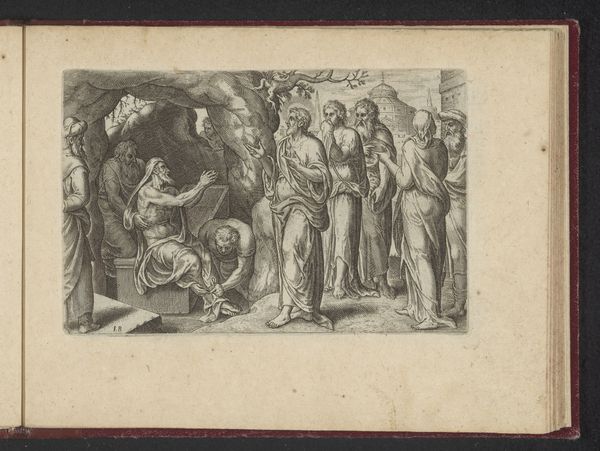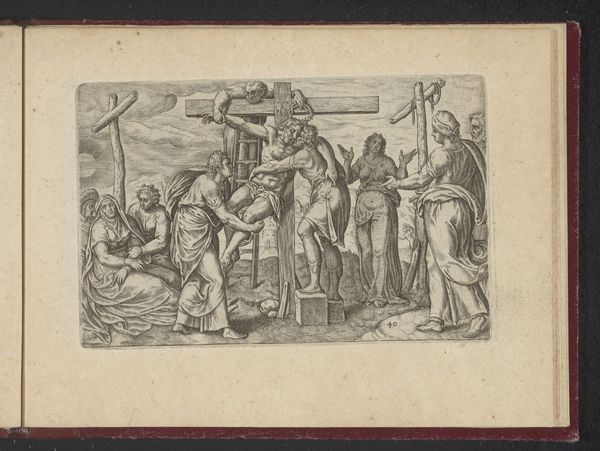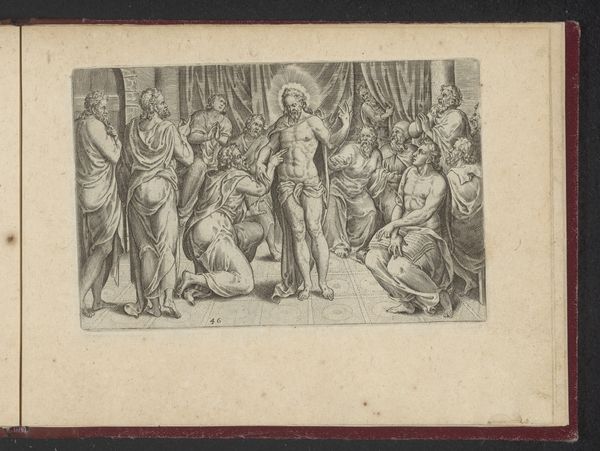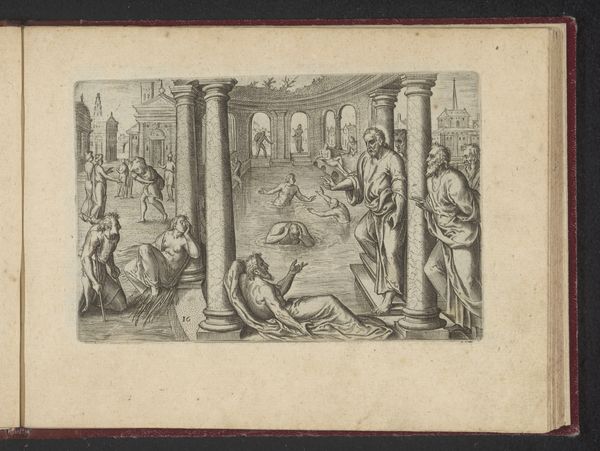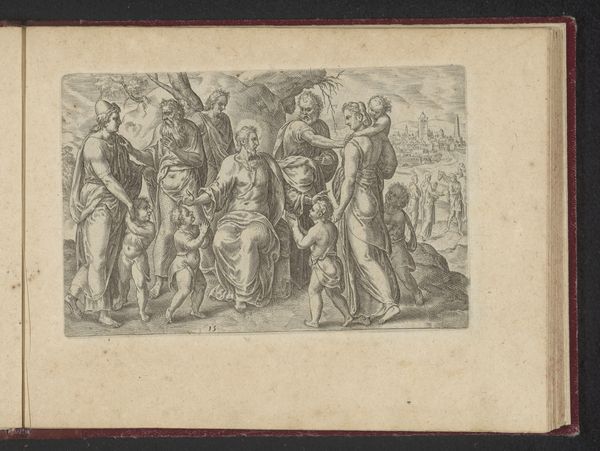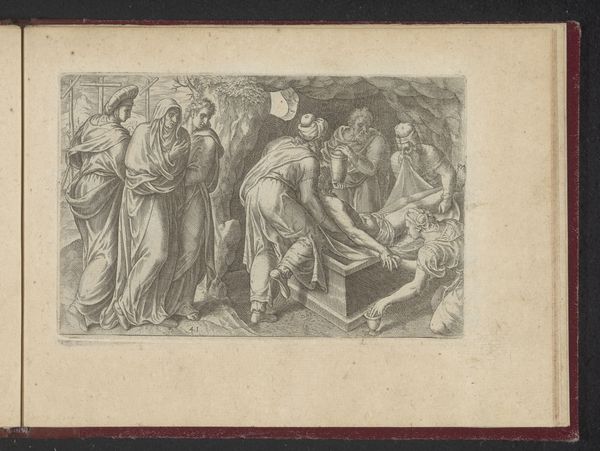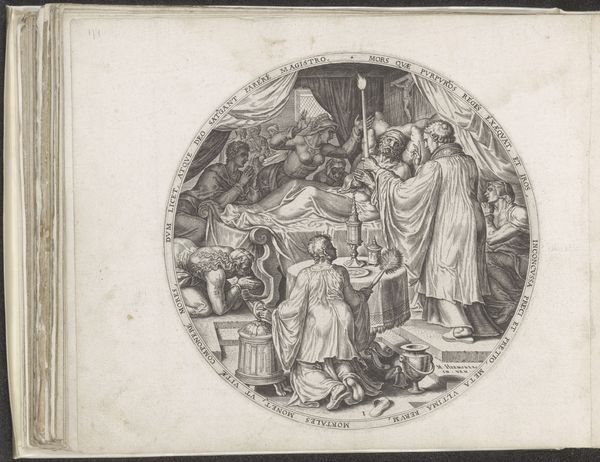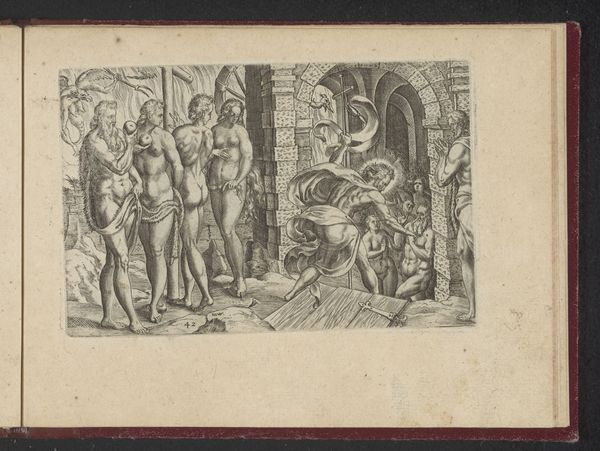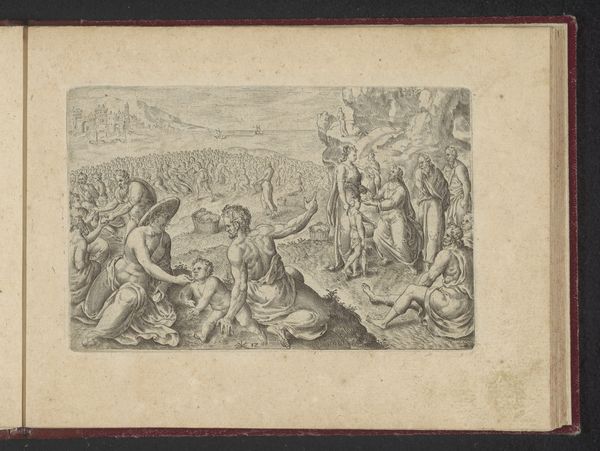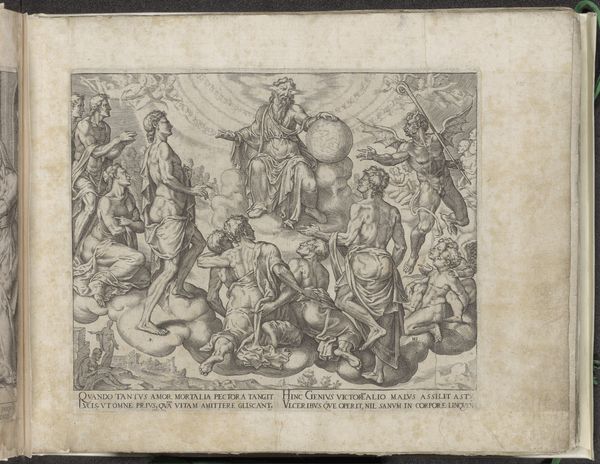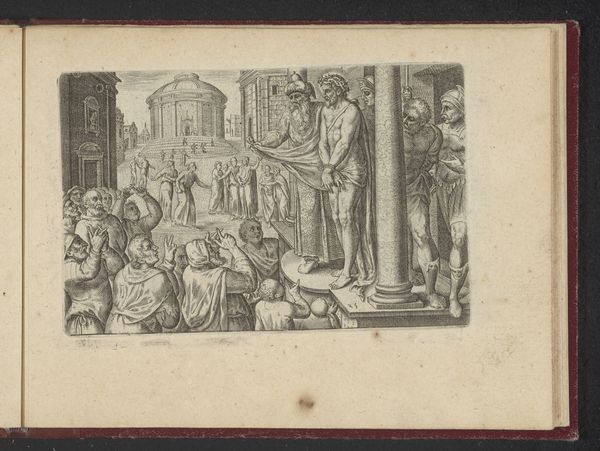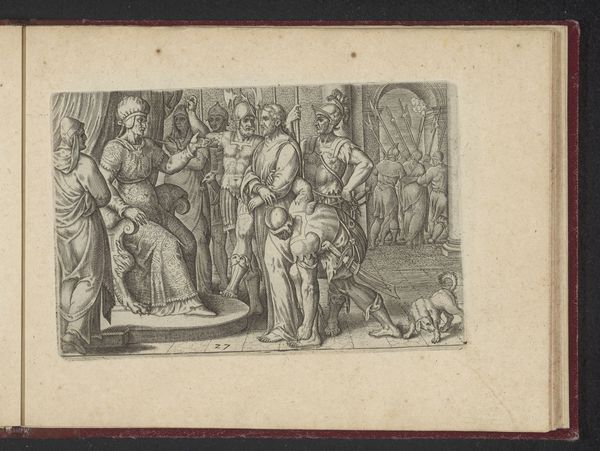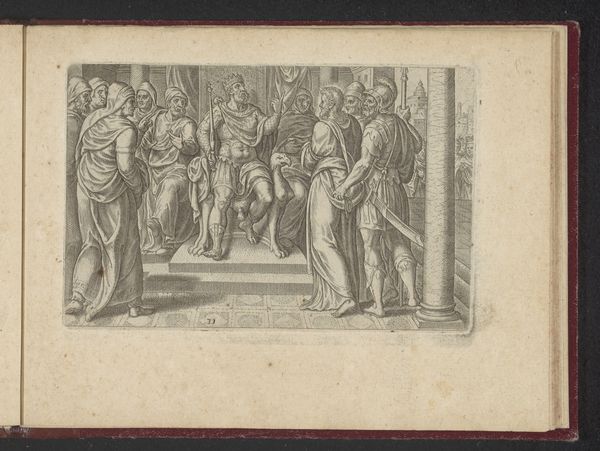
print, engraving
# print
#
figuration
#
history-painting
#
northern-renaissance
#
engraving
Dimensions: height 92 mm, width 139 mm, height 137 mm, width 183 mm
Copyright: Rijks Museum: Open Domain
Philips Galle created this engraving of the Crucifixion in the late 16th century. The central image is dominated by the figure of Christ on the cross, flanked by two other figures, while the Virgin Mary and other figures cluster at the base. The image of the crucifixion—Christ’s body stretched on the cross—is a potent symbol of sacrifice, redemption, and suffering, deeply ingrained in the collective psyche of Western culture. We see the cross and the impaled body re-emerge in Roman art, and later in contemporary works by artists such as Francis Bacon. Consider Mary’s pose at the foot of the cross. Her hands are clasped together in mourning and prayer. This gesture has evolved from ancient images of mourners in Greek tragedies and can be traced through a lineage of devotional images, each reiterating the profound grief and empathy tied to the crucifixion. The emotional power of this image lies in its ability to tap into our shared understanding of loss, suffering, and salvation. The echoes of crucifixion reverberate through history, resurfacing as powerful symbols in different contexts, bearing witness to the cyclical nature of cultural memory.
Comments
No comments
Be the first to comment and join the conversation on the ultimate creative platform.
